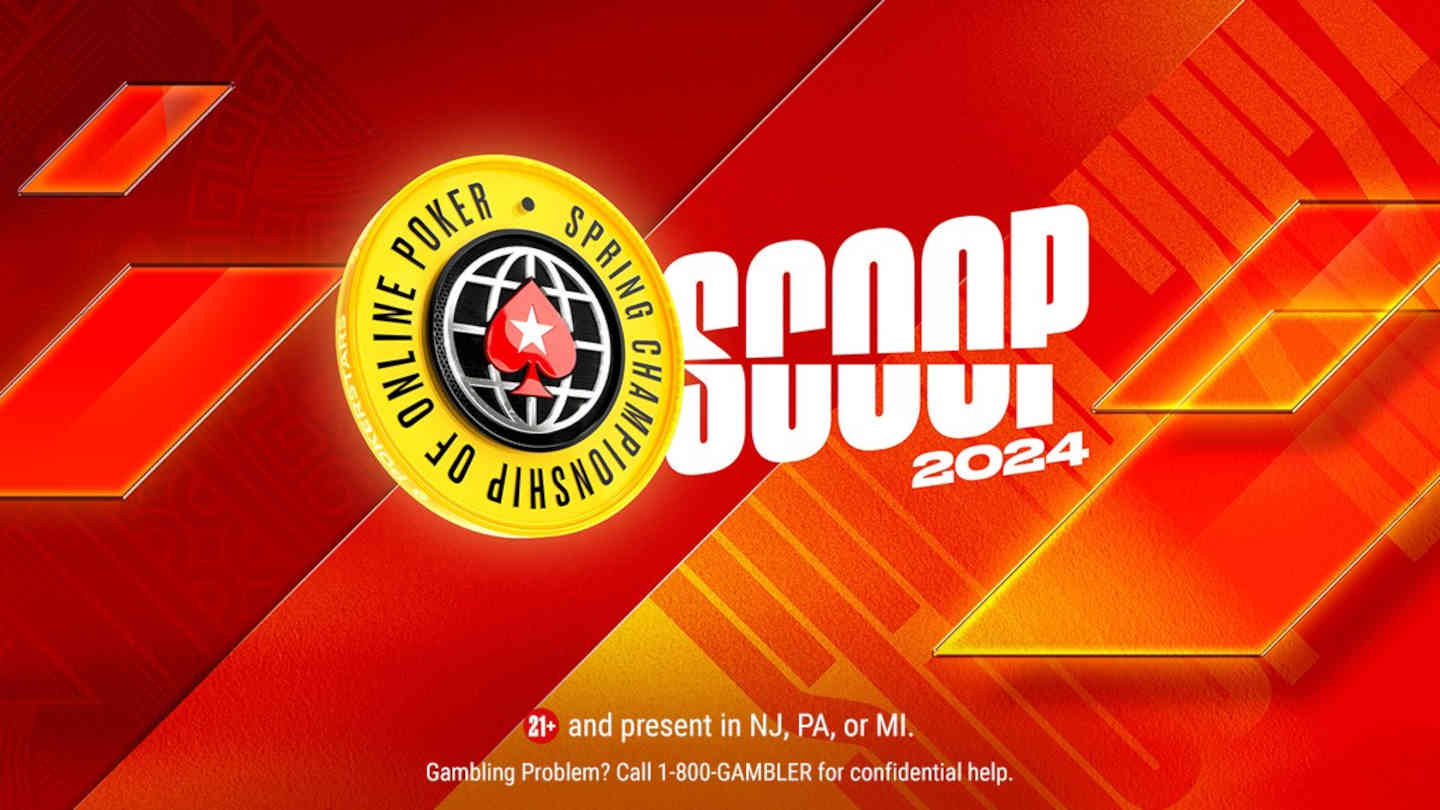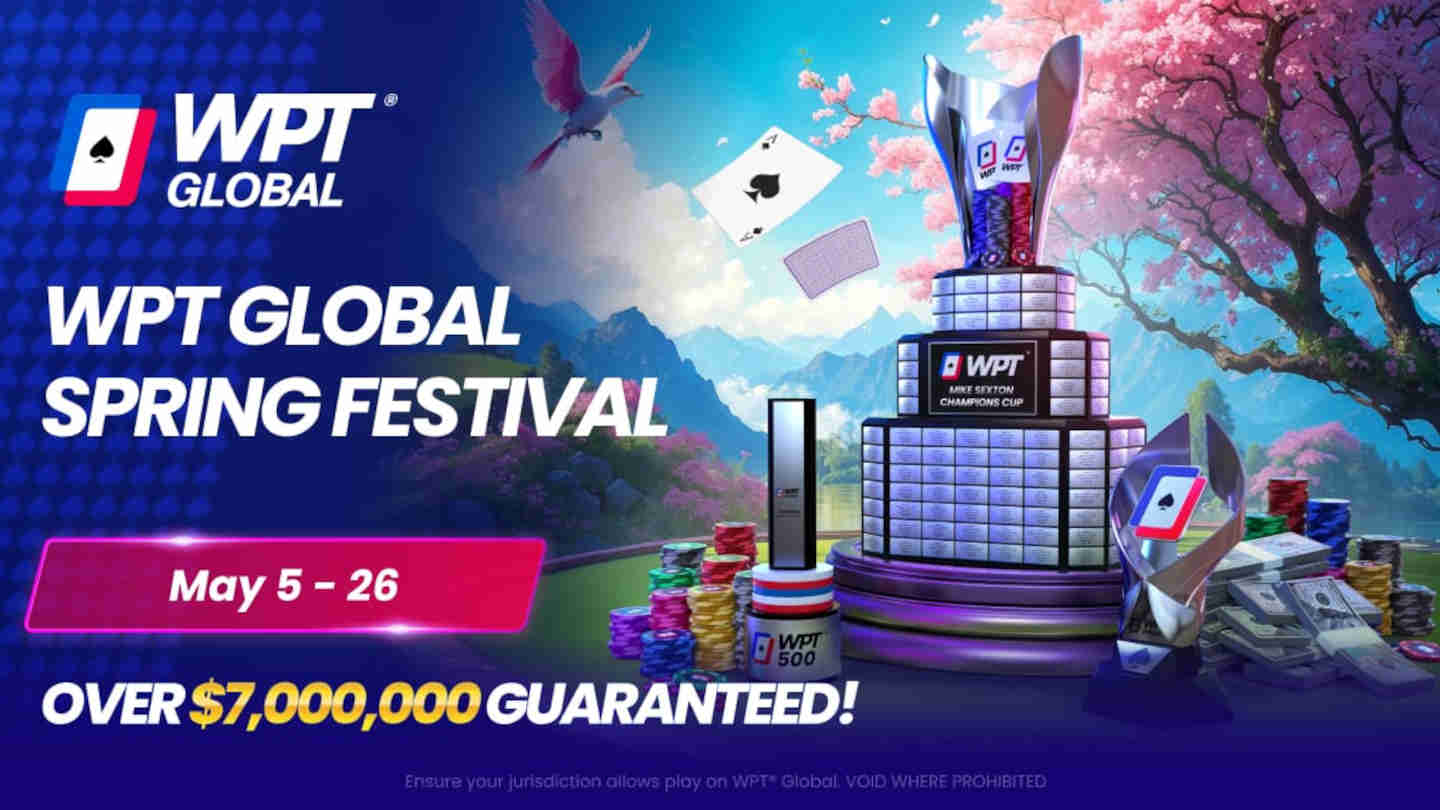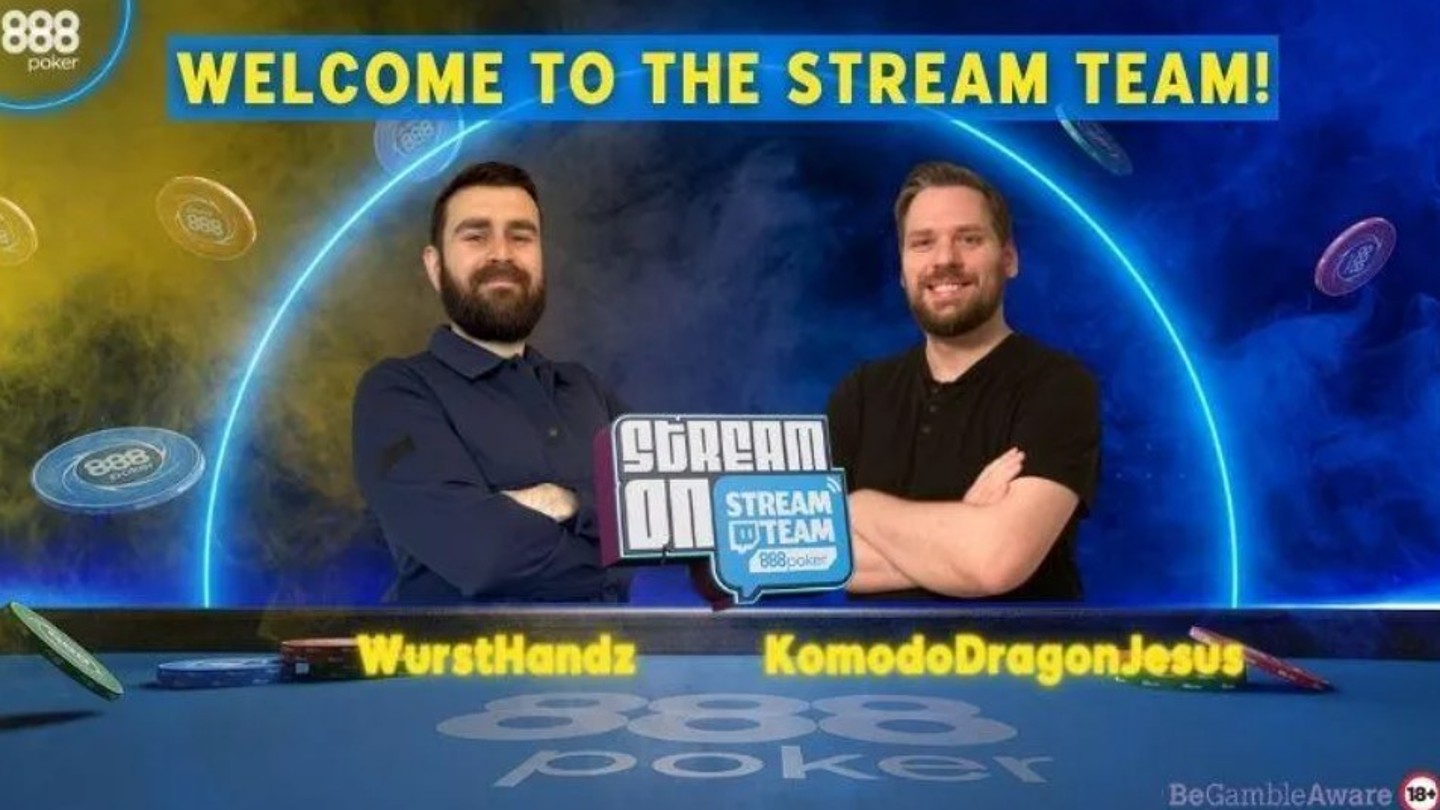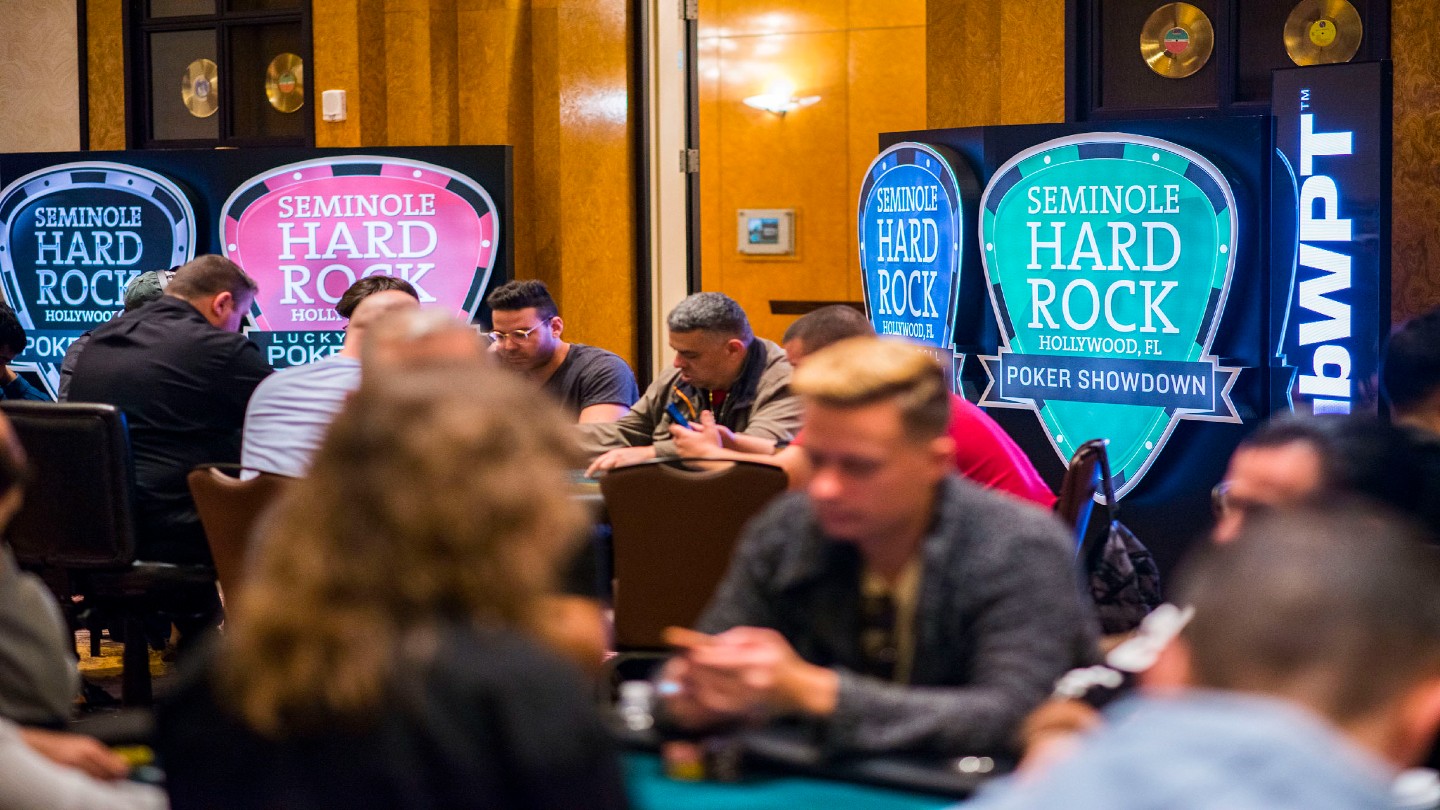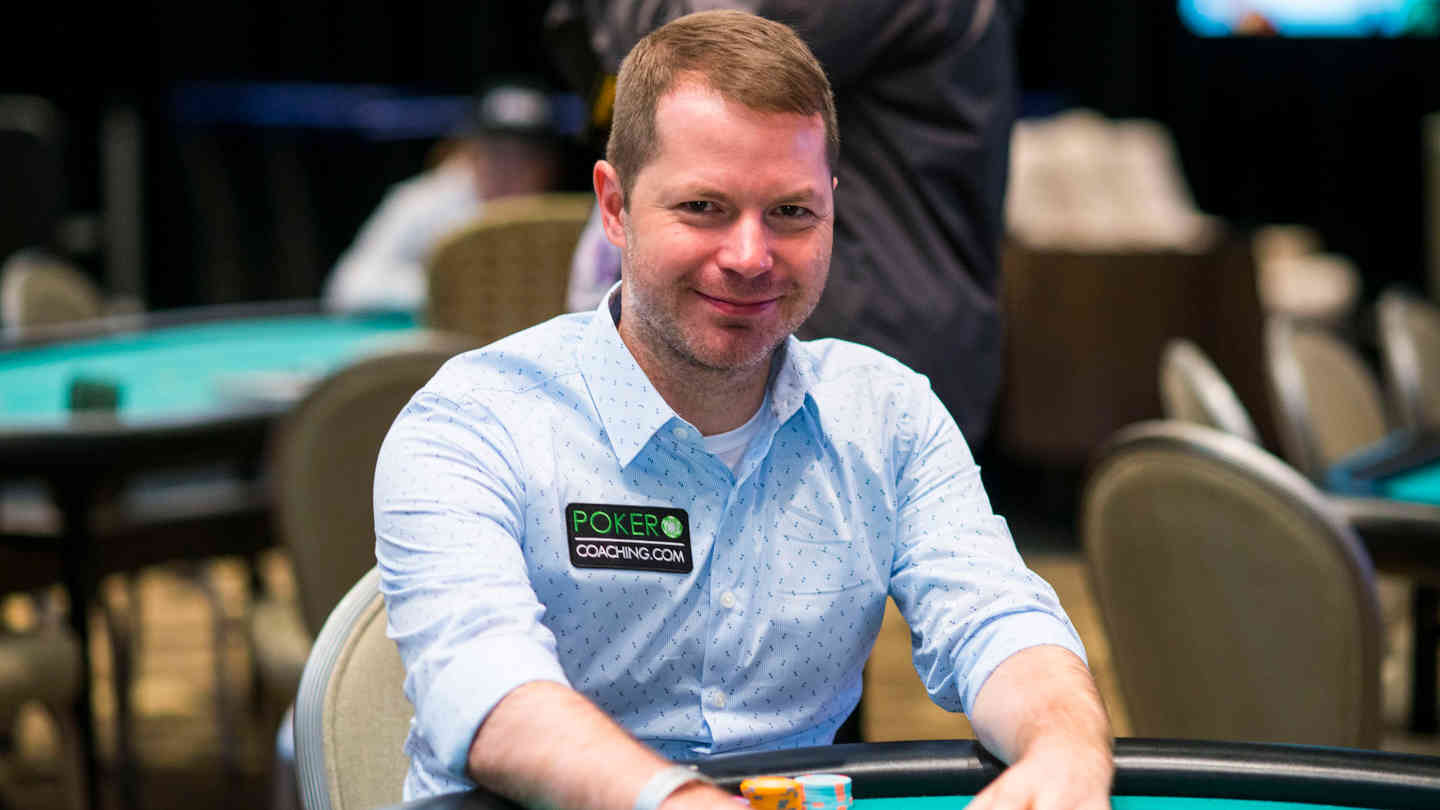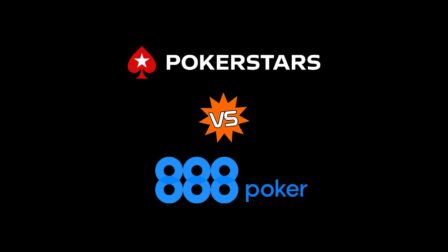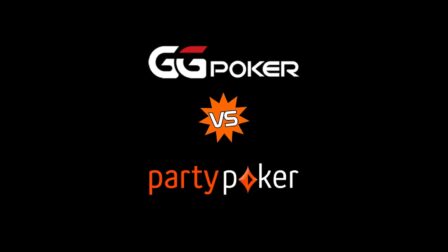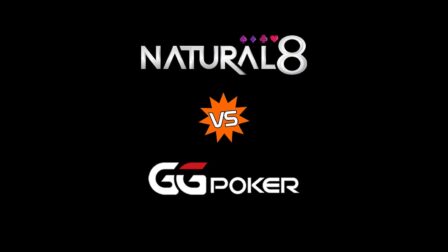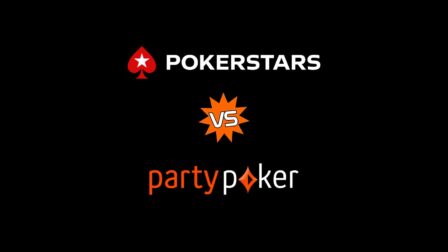Upswing Poker Lab Review 2024 – Learn All You Need To Know In One Place!
Navigation
Most poker courses out there focus on a particular segment of the game and rarely do we see a course that comes equipped with a kind of knowledge that covers all of the areas in one place.
That's what makes the Upswing Poker Lab stand out from the crowd, so make sure to check it out!
However, this could be both good and bad, depending on your situation, so I hope this review will help you answer all of your questions.
Upswing Lab covers everything, from the basic strategy to advanced concepts, cash games, MTTs, and even live play, so you will definitely find useful information.
Since everything is neatly organized, you can take one segment at a time and focus on improving that particular area by learning from the best Upswing Poker Lab instructors.

In this Upswing poker lab review, we'll look into all parts of the Lab to see what it is that they offer. I want to start this review by recognizing the poker coaches behind the strategies, so let's jump directly into that.
Upswing Poker Lab Review: Your Elite Coaches
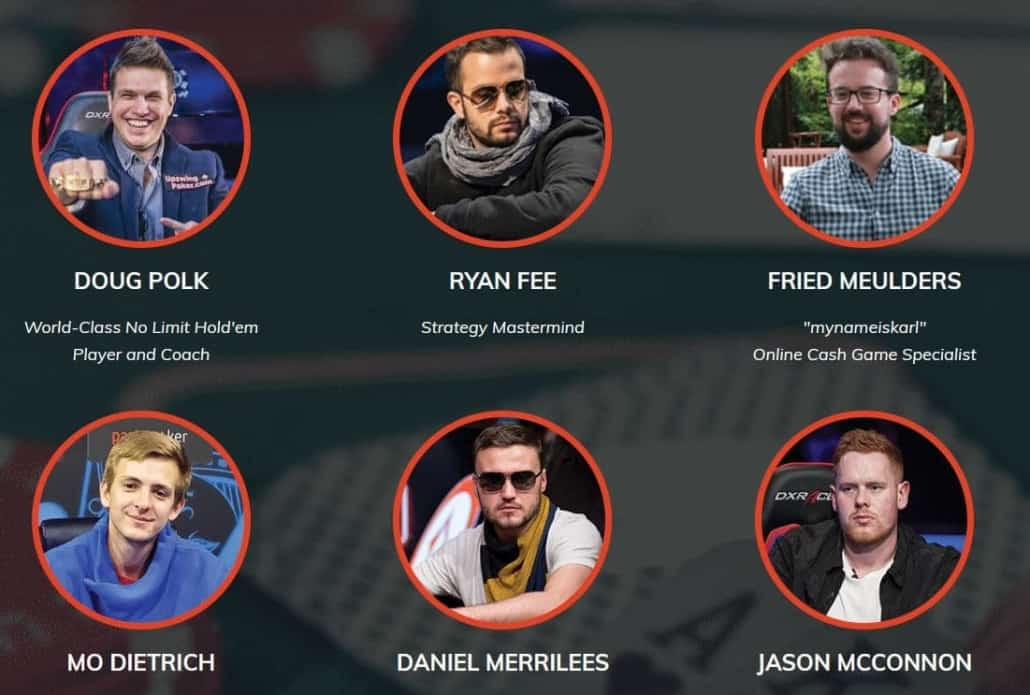
Each part of Upswing Poker Lab is covered by a top player in that particular game, giving the viewer a lot of value. MTT players are not trying to teach you deep stack strategies, and cash games specialists are not explaining ICM spots, so I like that everyone concentrates on the areas they excel.
Doug Polk and Ryan Fee were the main instructors when Upswing Lab was launched, but now this training program features multiple high-stakes crushers sharing their knowledge.
- Doug Polk – advanced strategies, ranges, and deep stack play.
- Ryan Fee – an overall strategy.
- Fried Maulders – online 6-max and solvers.
- Jason McConnon – high-stakes cash games.
- Daniel ‘DANMERR’ Merrilees – cash games, heads-up.
- Moritz ‘Mo’ Dietrich – high-stakes tournaments.
- Parker ‘tonkaaaap’ Talbot – MTTs short stack play.
- Mike Finestein – Live games.
New coaches are constantly joining the team, so you can expect this rooster to only increase in the future. That said, you can learn everything you need to know to beat low to mid-stakes games from the ones sharing their knowledge on Upswing Poker Lab at this point.
If you want a dedicated program covering a specific game in much more detail, check out advanced courses from Upswing Poker.
Upswing Lab Review – No Limit Simplified
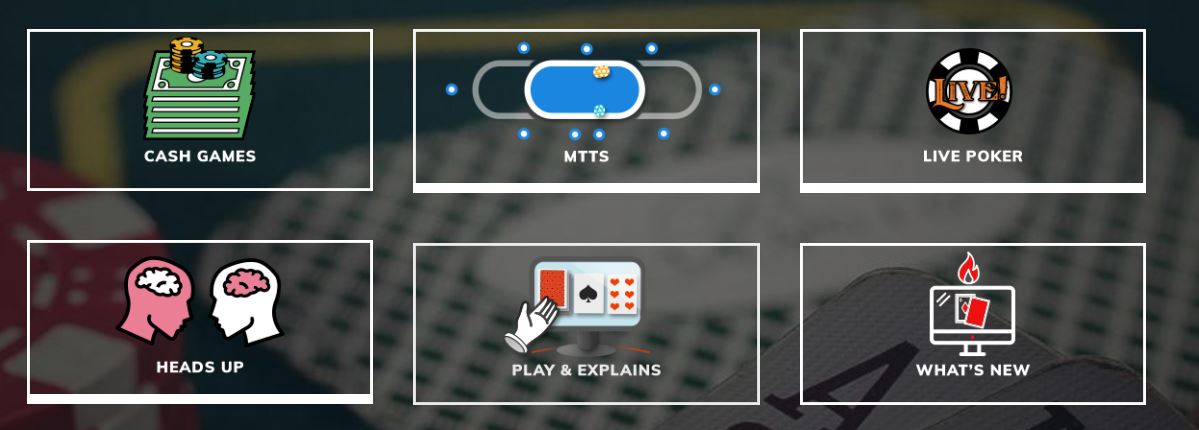
The Upswing Lab Core Strategy segment (formerly Upswing Lab Core) has you covered if you’re looking for a course that will introduce you to general poker concepts and fundamental strategies.
With 30 written lessons and videos to go through, this segment covers everything. From the core poker terminology to basics and outside factors such as poker software, bankroll management, and mental game considerations.
It is worth mentioning that this segment is delivered by Doug Polk, the Upswing Poker founder, and a well-established high-stakes pro.
⭐ Introductory Videos
The first several videos of the No Limit Simplified cover things such as:
- Terminology
- Ranges
- Hand categories
- Matrices
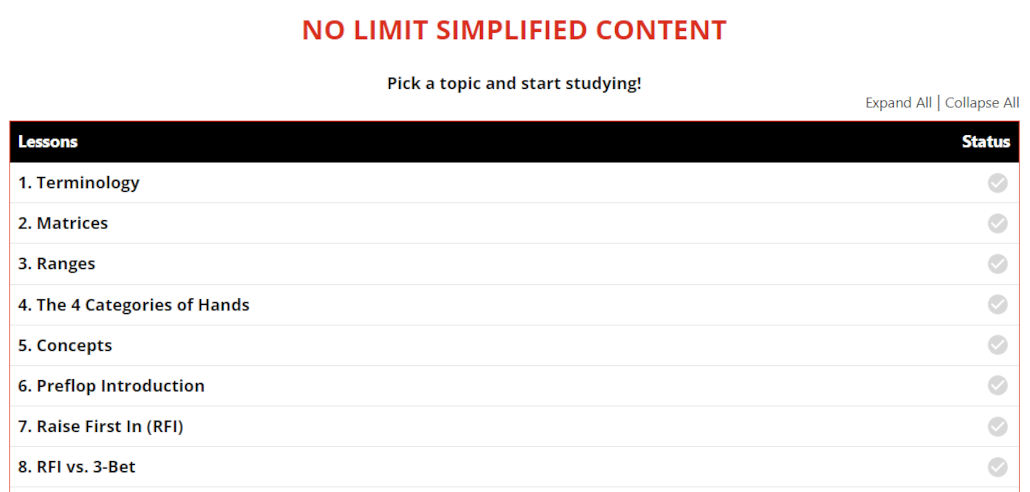
In these videos, Polk explains how you should be looking at poker in an organized and understandable fashion.
For many new to the game, this is an important first step toward becoming a good player. Without understanding these core ideas, it is virtually impossible to properly understand any later talks even about basic strategy, let alone some more advanced concepts.
This introductory segment is what’s missing from many poker courses targeting novice players as they assume everyone is familiar with concepts such as ranges and categories of hands. But that is not always the case. So, these first few introductory videos are a must-watch if you are new to this game.
⭐ Fundamental Strategy
After explaining these core ideas and terminology, the course continues to deliver over a dozen videos covering poker strategy basics.
Many of the things discussed in these videos are nothing new to those who have been playing seriously for a while, but they can be a real eye-opener to someone who’s been playing poker recreationally and has been trying to improve their game.
Topics include:
- Preflop raise (raising first in, playing against the raiser)
- Postflop bet sizing
- Value and advantages of position
- Playing with and without initiative
- Turn play
This is just a brief overview of what you’ll find inside the Upswing Lab No Limit Simplified segment. All these various concepts are in several videos to cover specific angles, i.e., playing as the aggressor or playing against the aggressor, different bet sizing ideas depending on what you’re looking to achieve, etc.
Keep in mind that this part is intended primarily for new players, so that is not a surprise that Doug does a good job of bringing various ideas down to earth and explaining them in a way that is understandable and logical for those just starting their Hold’em journey.
⭐ Outside Factors
A lot of vital poker parts are away from the tables, which is why the module wraps up with several articles discussing things like:
- Best poker tools
- Mental game & tilt
- Bankroll management & building
- Game selection
- Making Adjustments
All of it is very important for someone looking to take poker seriously and make it into something more than a hobby or a pass-time.
For example, poker software is must-have these days if you’re playing online at any significant stakes. Everybody’s using it, and if you’re the one without it, you’ll be at a serious disadvantage.
Despite what we all would like to think about our playing abilities, going up against someone who has much more information on us is already a huge disadvantage.
The bankroll management, game selection, and mental game segments offer insights into some of the most common issues every poker player has to deal with: tilt, variance, dealing with pressure, and maintaining a healthy life balance, which is vital for long-term success.
It is essential to get all that information to reach long-term success.
⭐ Members’ Hand Reviews
Upswing Poker Lab added a new module that focuses on analyzing hand samples sent by the members, where the course moves from theoretical discussion to real play.
Ryan Fee and Doug Polk sit down together to go through some interesting spots found in the samples from Lab members and look into hands, referring back to theoretical concepts discussed in previous lessons.
It’s good to see that the course covers several different stakes, ranging anything from NL5 to higher ones. Since there is a big difference between these stakes, this approach ensures that players who are just starting to build their bankroll are getting the type of advice they need and understand the necessary adjustments for their games.
Upswing Lab Review – Cash Games
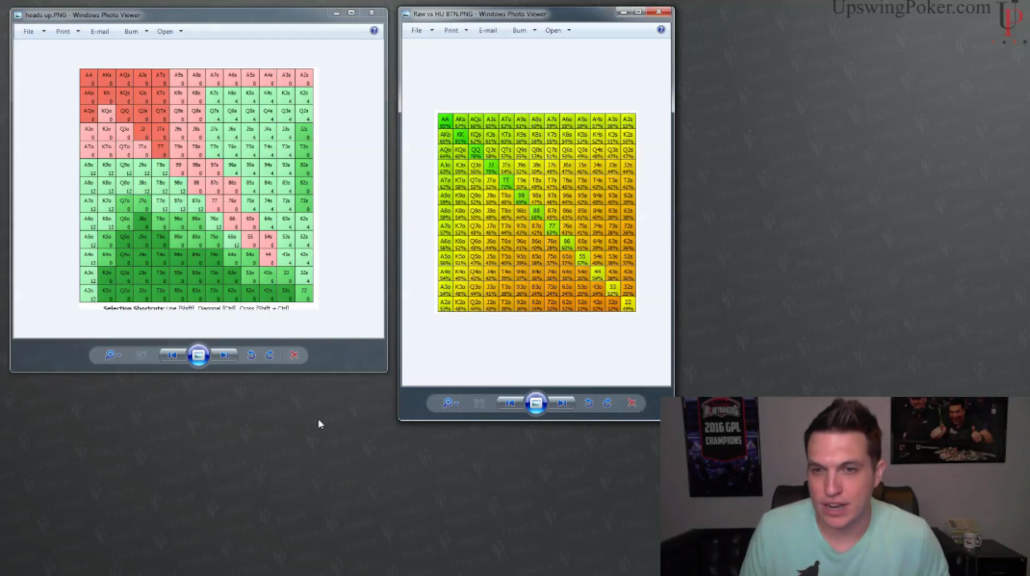
There is no particular order in which you’re supposed to go through Upswing Lab modules, as each one of them stands on its own. So, I’ll just start the review with the first one listed: the Cash Games module.
After mastering the core strategies in the No Limit Simplified section, Upswing Lab lets you pick your game of choice and get down to business.
If that’s cash games, this is the module for you.
Keep in mind that the module has been created targeting specifically the players who watched the introductory course, as you’ll find references to the ideas and concepts mentioned there.
The Cash Games module of the Upswing Lab is largely taught by Doug Polk and Ryan Fee, with appearances from other pros on the roster, such as Matthew Janda and Gary Blackwood.
The course takes you from the introductory module's basic concepts to the next, more theory-based level and is divided into four main sections, namely:
- General concepts
- Preflop & flop
- Turn & river
- 3bet & 4bet pots
This module provides everything required to be successful in modern-day cash games. It relies heavily on solvers and other poker software, which may sometimes feel a bit tedious, but it is the best and most accurate way to study poker.
As you’d expect from an Upswing course, there is a lot of quality content inside. Tens of hours of videos featuring theoretical lessons and hand examples will help you absorb the knowledge in the fastest and most efficient way.
Using the Preflop Charts Viewer tool, you can also access solved preflop ranges for both online and live cash games, another tremendous resource you get from joining the Upswing Lab.
⭐ Upswing Poker Chart Viewer App
Upswing Lab prepared their mobile app that contains all sorts of charts presented throughout different modules all in one place. In total, there are more than 240 ready-made charts from the Lab.
This app is extremely handy as it makes it possible to have your ranges with you wherever you go. You’ll have easy access to them during your live poker sessions and online play without constantly switching between different screens on your PC.
These charts are truly one of the best parts of the course because they provide an answer for pretty much every situation out there. While it is always great to be flexible and analyze your play, if you stick to these charts, you can pretty much be certain that you’re playing a very solid and fundamentally healthy game.

Upswing Poker Lab Review – Multi-table tournaments (MTTs)
It is no surprise that there is an entire module of the Upswing Poker Lab devoted to MTTs. One thing to keep in mind is that this tournament-specific course does suppose that you already have the basic ideas and concepts covered, either from watching the first two LAB parts or by being someone who already has a good grasp on the fundamentals.
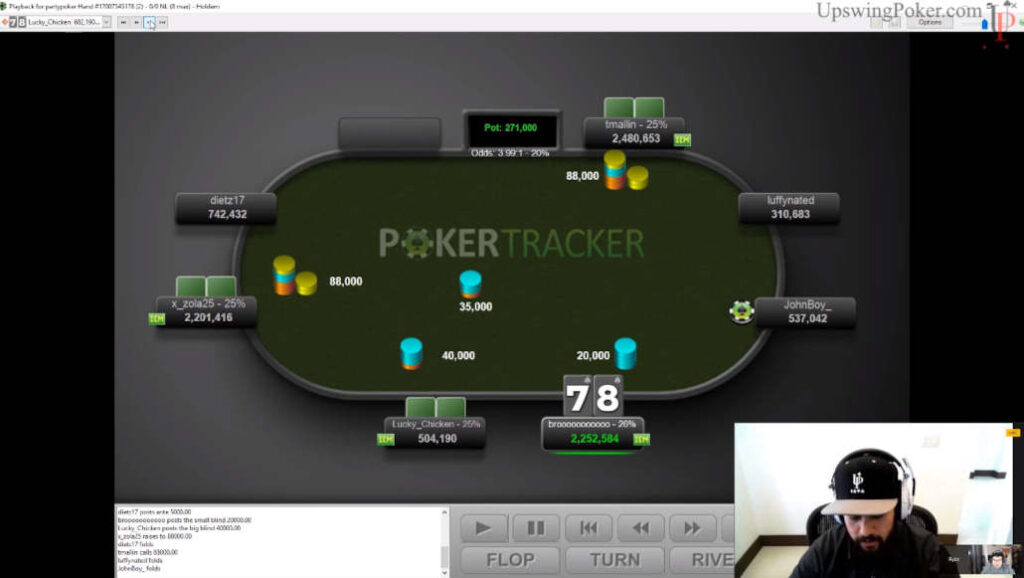
There is a lot of valuable information contained inside this module, but it has a bit of an unusual structure. The lessons inside are not arranged in any particular order, so you should just pick a topic that’s you’re interested in and get started.
While this approach may have its advantages, it may not be the best for beginner players, who may feel a bit lost, not knowing where to start. If this is the case, I strongly recommend first going through the No Limit Simplified section, as it will help you navigate the rest of the Lab.
The module consists of 18 large lessons in total, with different coaches covering different topics, for example:
- Doug Polk explains that ICM
- Ryan Fee and Parker Talbot talking about the final table play
- Moritz Dietrich bringing you an advanced preflop strategy for MTTs
- Parker Talbot covers the 3-bet pots’ strategy in detail
- Bounty tournaments strategy with Hristivoje “ALLinPav” Pavlovic
- Blind vs. blind play, and more
Each module section contains a few hours' worth of videos with an expert coach covering the topic they’re familiar with.
There is no doubt that the MTT module of the Upswing Lab contains everything you need to significantly improve your tournament play.
The only struggle you can have is how to go through the lessons.
If you feel like this is the case, I’d suggest you start with the preflop guide, followed by the flop betting and blind play lessons. After that, you can pick any of the topics, and you should have a good foundation to keep up.
Below, you’ll find an overview of some of the more important lessons in this module, which should further help with figuring out where to start.
⭐ ICM
ICM (the Independent Chip Model) is a concept only applicable in tournaments as it is non-existent in cash games.
In cash games, every chip is worth its face value, i.e., one dollar won is one dollar you can cash out and take with you. This isn’t the case in tournaments because money is distributed differently through prizes for finishing in a certain position.
So, to give you an idea of what your chips are worth at a certain point in a tournament, the ICM model was invented.
Many players seem to overlook the importance of this model, so this 20-minute video on ICM by Polk is an invaluable source of information.
In it, he explains how the values of your chips change throughout the tournament and how you should change your strategy accordingly to maximize your expected value.
Overall, this is a very good video that brings across the whole idea of ICM, what it is, how it works, and why it exists in the first place.
Even if you don’t know the exact math behind ICM, it is important to know how to use it during your play, and here you will learn how.

⭐ Big Blind Play
In tournaments, the big blind is probably the most important position, which is why one video in the module is dedicated to big blind play.
Playing from this position is extremely challenging because you are forced to put the chips in with a random hand and out of position. Therefore, your main goal isn’t to win from the big blind but to lose as little as possible.
Once the antes kick in, the big blind will often have great pot odds to call and see a lot of flops with fairly weak hands. Ryan Fee makes some interesting points about this, showing that even calling with a 72o against a fairly strong range opening 2.5 big blinds is slightly profitable in terms of raw equity.
Of course, raw equity isn’t all we need to look at in these spots, but it is something to think about when figuring out your big blind defense ranges.
To help with this, Ryan lays out some logical rules to follow in big blind defense scenarios, making it easier to predict if the hand will realize, under-realize, or over-realize its raw equity.
Being out of position works against us realizing our full raw equity; suited hands realize its raw equity much better than their unsuited counterparts, etc. This video should give you a good understanding of how you need to proceed in various situations and what you need to consider before making a final decision.
⭐ Playing 10 – 25 Big Blinds (Short Stack)
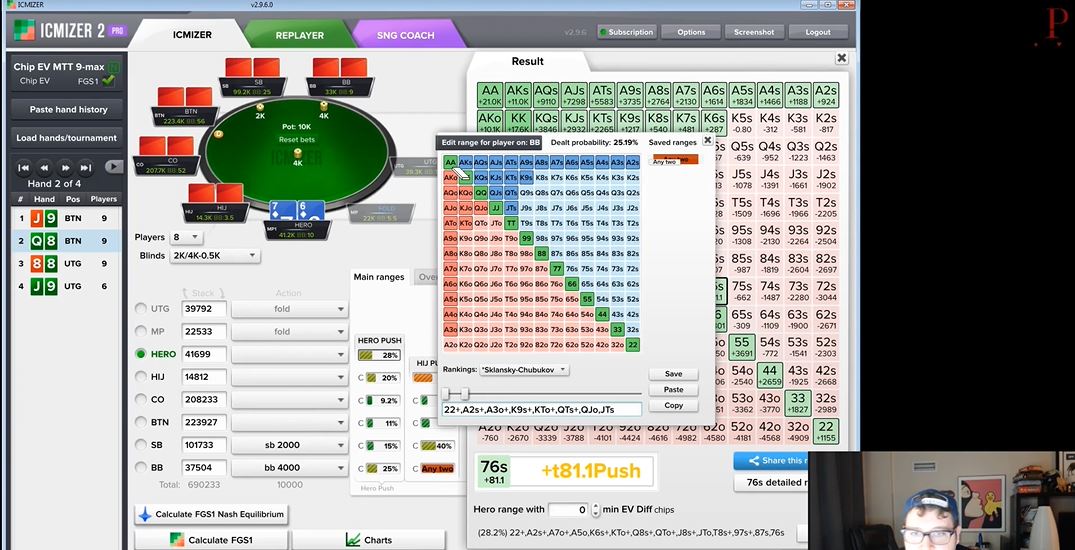
Another important area of tournament play to master is short stack play, i.e., playing with the stack between 10 and 25 big blinds.
This can be a real struggle for players transitioning from cash games because it is a concept they are just not used to, seeing how barely anyone ever plays with a <50bb stack.
Across 11 videos in this particular segment, the course touches upon almost every possible scenario when playing with a short stack, such as:
- Raising first: all-in and non-all in situations
- 3-bet all in situations
- Calling all-ins
- Flatting
- Playing in single-raised pots
With this being such an important and extensive topic, there is a lot of material covered in the videos, all accompanied by many examples to get different points explained, especially in terms of how they relate to ICM.
Almost everything you do in a tournament has to do with ICM considerations, and when you’re on a fairly short stack, meaning you’re putting your tournament life on the line, this becomes even more important.
To deliver this topic, Ryan Fee is joined by Parker ‘tonkaaaa’ Talbot, which is a well-known player streaming on Twitch.
⭐ Check-raising the Flop as Preflop Raiser
Moritz Dietrich has covered several topics in the MTT module, primarily dealing with the postflop play.
He’s also the main man behind one of the latest additions to the course covering the topic of check-raising the flop as a preflop raiser. While this may seem like a highly specific area, Dietrich does a great job of covering various aspects of it in a series of videos.
The segment starts with an overview of different board structures and explanations when you should be looking to check-raise on the flop.
In addition to board structures, videos also look into how to structure your check-raise ranges vs. different sizes and how the stack depth and ICM influence our decision-making process.
In the final video of this module, Dietrich also looks into several examples that take into consideration population tendencies, which I really liked.
He explores what kind of results we can expect to get when using the check-raise move against three main types of players: those who fold slightly too much, those who fold way too much, and finally, the ones who fold too little.
⭐ The Final Table Play
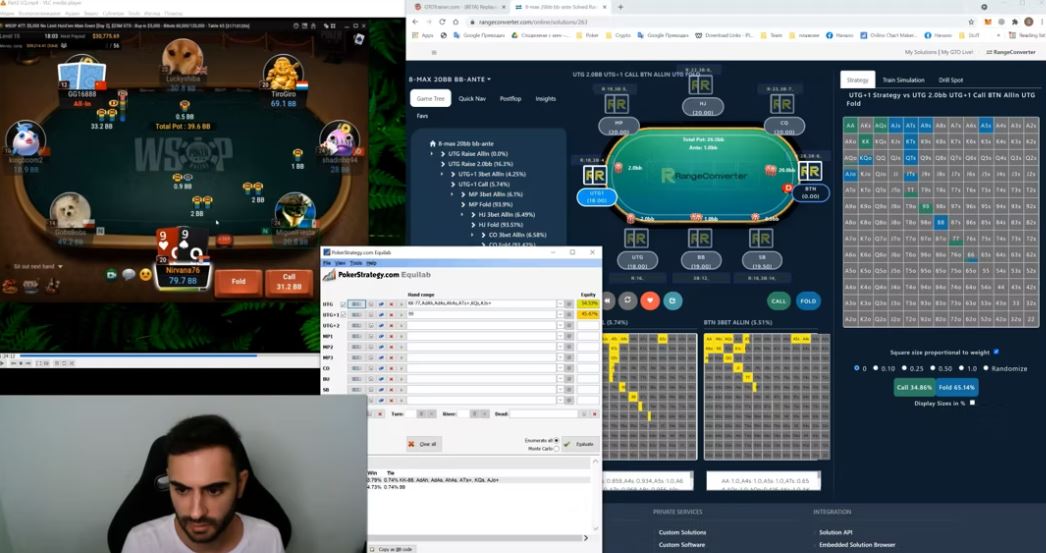
In tournaments, the final table is where you want to be. It is where all the big prize money is.
When you reach the final stage, pay jumps between one or two positions can be dramatic, so by letting someone bust before you, you can significantly increase your earnings.
At the same time, the biggest rewards are usually for those finishing in the top three spots, with the winner getting the lion’s share of the cake. So learning how to maximize your chances of finishing on top and avoiding early busts is the way to success.
This segment is delivered through different final table reviews played by ‘tonkaaaa’, looking into different scenarios with short, medium, and large stacks and different table dynamics, getting all the various points across.
In the videos, Fee and ‘tonkaaaa’ discuss many different hands and difficult situations to give you a much more hands-on approach instead of theoretical stuff so that you could learn from real-life situations.
⭐ Members’ Tournament Reviews
Another fresh segment added to the MTT module covers more than five hours of tournament play submitted by Upswing Poker Lab members.
Like with the cash game module, this is an excellent way to look into how things play out at the tables, how different concepts can is in real play, and what some common leaks are.
Once again, the segment covers three different tournaments, namely:
- $22 Knockout MTT
- $22 regular MTT
- $500 MTT
There is a huge difference in the average skill level between these two buy-in levels. So, by analyzing both of these, Polk and Fee cater to players from both sides of the spectrum and also give lower stakes players an insight into what’s the play like at higher levels and how to adjust based on concrete, actual examples.
The Upswing Poker Lab Review: Live Poker
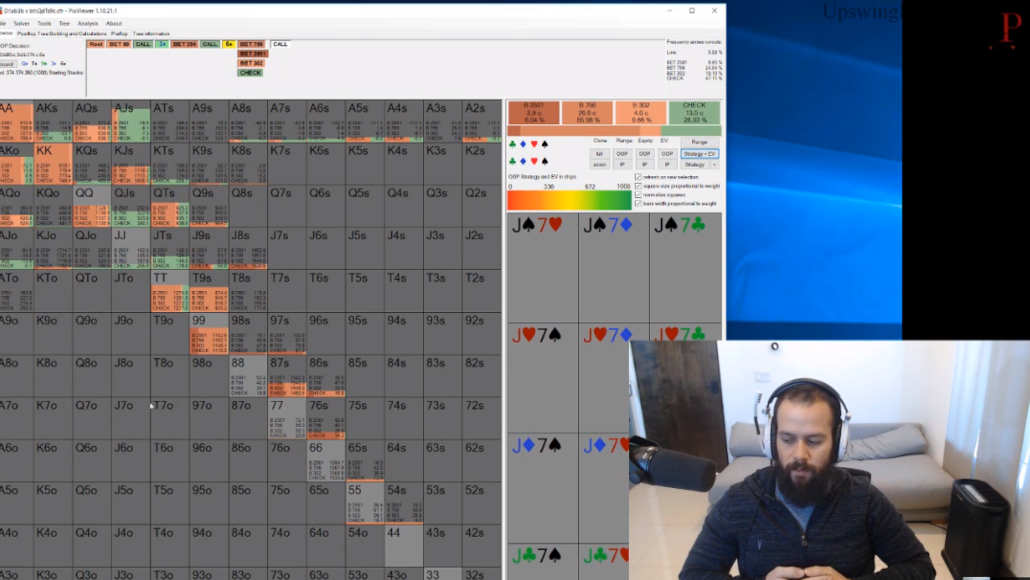
A majority of courses out there are geared primarily towards online poker, which makes sense since most people looking for these types of training materials are primarily online players.
However, most of us do occasionally play live as well, and having some resources to fall back on in this particular area is very helpful.
This is where the Live Poker module of the Upswing Lab comes in. Although it isn’t as extensive as some other modules, it covers specific points related to live play.
It will help you build a solid starting point, avoid big mistakes, and understand how to adjust your strategies.
Naturally, all the strategy considerations from previous modules still apply in live games as well, but there are adjustments that you need to know. The module is delivered by Doug Polk, Ryan Fee, and Mike Finstein.
⭐The Live Poker Approach
Mike Finstein starts by explaining his background and poker development, which gives a good understanding of his experience and why he is qualified to teach us.
One of the reasons why he’s always preferred live is the fact he’s always found online not just tougher but more mentally draining.
At the same time, playing live, he could put in long sessions with no problems. This is an issue that many poker players have faced, so they’ll probably be able to identify themselves with Finstein in that regard.
After the introduction, the first video goes on to explain how to approach and think about live poker, considering all the different variables that aren’t the factor when playing online.
With live games usually not as technical as online play, figuring out ranges and how to play your hands for value becomes a completely different ballpark.
Other videos in this particular section also talk about the importance of picking the right casino and carefully choosing your playing times. Of course, not everybody has access to the same type of selection depending on where they live, but these general guidelines are good to keep in mind regardless.
Finally, several videos cover live hand examples and focus on how different are people’s ranges in live games and how they require more adjustments to maximize your value.
⭐ Live Games Dynamics
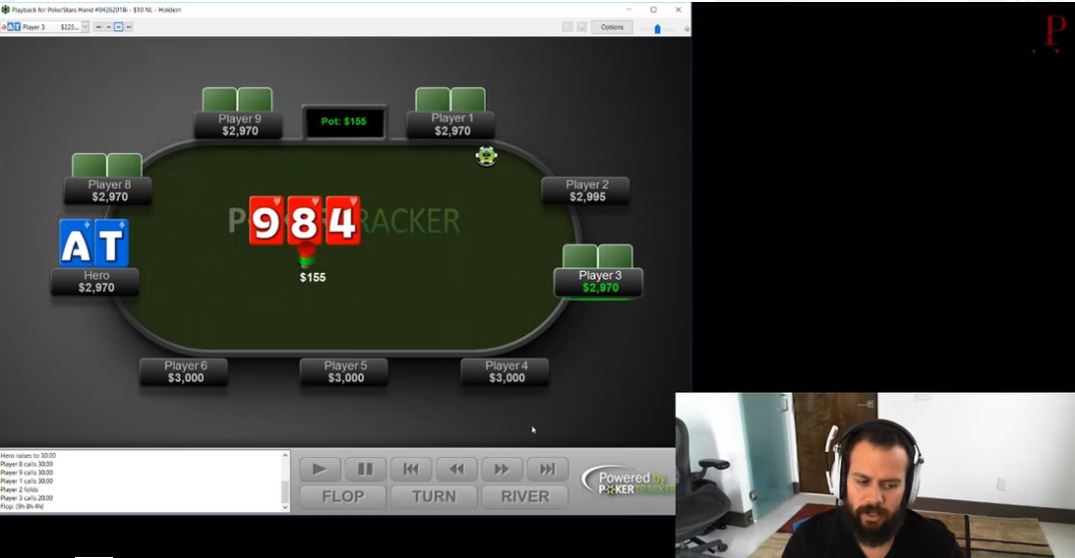
A sub-section of the Live Poker module deals with live play dynamics and covers important aspects of live games in terms of how they play, what players’ tendencies are, and what kind of adjustments are required to reach success.
In the videos, Ryan and Mike discuss particular games, such as the ones found in Bellagio or Aria, so they provide insights into actual games available in Las Vegas, which can be valuable knowledge for someone looking to play in this area.
They also discuss hero folding, navigating your way in multi-way pots (which are much more common in live games), different types of players, how they react in tricky spots, and where you can expect to make the most money.
So, whether you’re just looking to get started with live poker or someone with a certain amount of experience, these videos have a lot of valuable information to absorb.
⭐ Bayesian Approach
One section that might be new to most players is the Bayesian approach to live games.
In essence, this approach has to do with tactics based on prior probability and adjusting your play on general population tendencies. It moves away from the online GTO poker model and adopts some exploitative plays as a part of the overall strategy.
In essence, Bayes’ theorem is based on updating a prior probability based on the newly discovered information. In terms of poker, this means we need to make predictions about players we’re playing against based on general tendencies instead of sticking to a theoretical approach.
Although this is a mathematical model, understanding the basic principles behind it helps us understand the type of adjustments required in most live environments, especially in the sort of low to mid-range games.
Some of the ideas discussed as a part of this adjustment process involve:
- Playing weird multi-way pots
- Taking advantage of wild players
- Maximizing value vs. the fish
- Under-bluffing
Things discussed in this particular segment can be a real eye-opener, especially for someone used to online games, where the quality of play is generally much higher.
⭐ Live Play Examples
Like with the rest of the modules, this one also includes a good amount of hand examples where all the different concepts, ideas, and adjustments are further dissected through actual hands from real games.
Hands discussed in the analysis videos come from $5/$10 and $25/$50 games at Hollywood Park and Poker Night in America show, so some interesting spots and situations arise during reviews.
The Upswing Lab Review: Heads-Up Module
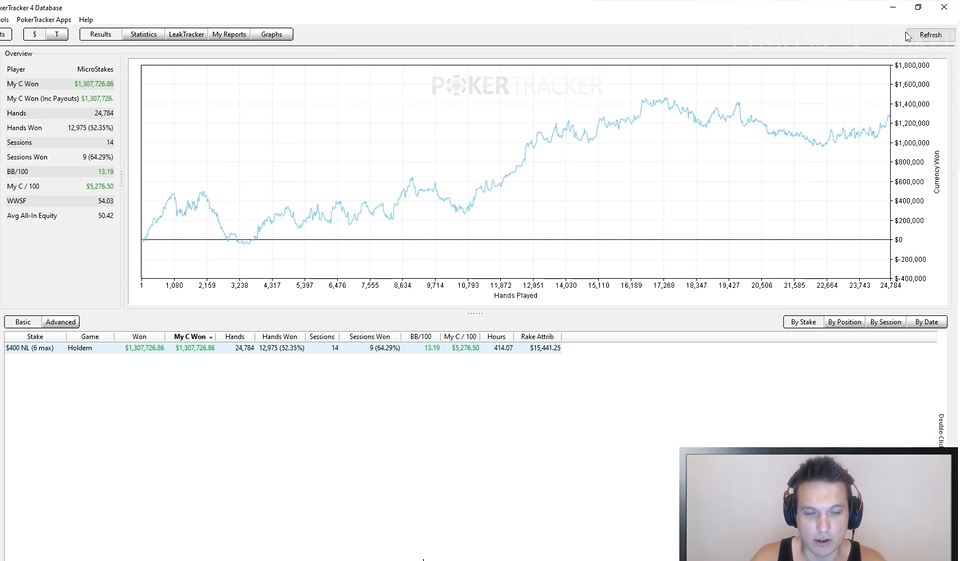
One of the latest additions to the Upswing Lab, the Heads Up module covers perhaps the most skillful form of poker. While heads up isn’t the first choice of those just starting with poker, understanding its intricacies is crucial as even in full-ring cash games and tournaments, most pots get down to heads up.
The module is taught by Daniel “dougiedan678” McAulay, a head-up specialist who delivers well over three hours of video lessons explaining the format he’s been so successful at.
The module is split into six main areas, covering the basic strategy, providing some valuable examples, and, finally, reviewing a members’ play to round things up.
- Heads-Up 101: this section talks about basics of one-on-one play, how preflop ranges differ from those in regular play, and why an aggressive approach is important.
- Heads-Up Spotlight lessons cover specific in-game spots, such as turn probes, 4-bet pots, and bet-check-bet lines, teaching you how to adjust your strategy.
- The member review section features McAulay going through a hand database of one of Upswing’s members, dissecting every segment of his play: preflop, single-raised pots in both positions, and 3-bet pots as the big and the small blind.
This is certainly not the most extensive heads-up course out there, nor it is intended to be that. It is aimed primarily at those new to poker interested in learning intricacies of this format and discovering how and why it differs from full-ring and 6-max play.
The Upswing Poker Lab Strategy – Play & Explain
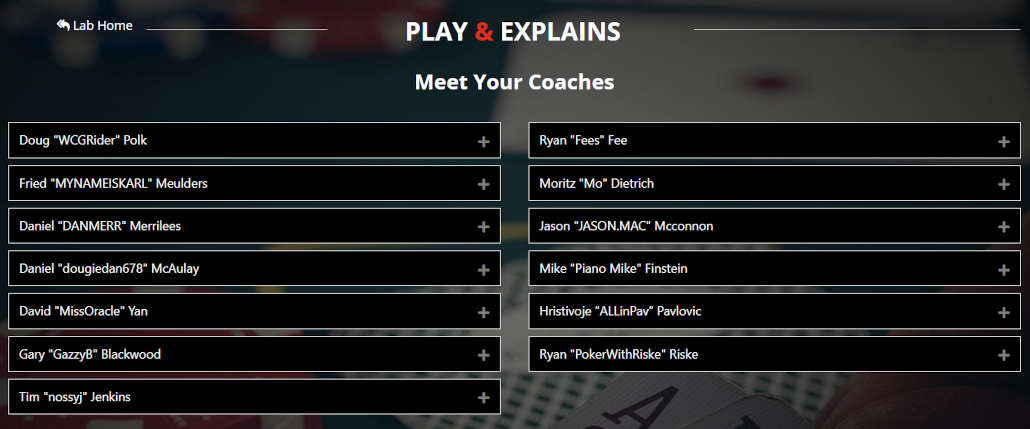
Upswing Poker Lab used to have a separate part called “Mini-courses”, but removed that section and put those videos into Core and Advanced strategy areas. That being said, they did not leave you behind and introduced an ever-growing play & explain section.
As the name suggests, this is an area where you will be able to see how the best players in the world play and explain their thought processes.
What I like about this part is that it is constantly updated with new videos, so you can get the most up-to-date information and see how these crushers take on the games.
Ability to see how Doug Polk plays heads-up, how Fried Meulders is crushing Zoom on Pokerstars, how Jason Mcconnon deals with cash games, or Moritz Dietrick crush MTTs can be a game-changer for you.
On top of that, they cover all of the stakes, going from the lowest ones up to the nosebleeds, so no matter what you play, you will surely get valuable information from these guys.
Upswing Poker Lab Pricing

Upswing Poker Lab discontinued offering regular promo codes, but they still sometimes offer a discount on special occasions, so keep an eye on that.
At first, you may think that this is a huge investment, but Upswing Poker Lab offers different plans to choose from, so you will find one that fits your needs.
Moreover, you should see this as it is – AN INVESTMENT. If you implement at least half of these tips, you will improve your game at once and make much more on the way!
Conclusion – Is Upswing Poker Lab For You?
All in all, it must be said that this Upswing Poker Lab review clearly shows that it is one of the best whole-encompassing poker course.
What I particularly like about Upswing Poker Lab is that the course has been around for a few years now, and has been constantly updated with new content.
Upswing poker lab is a well-suited course for beginners and more advanced players looking to improve their game and raise the stakes.
So, the Upswing Poker Lab is well worth the investment, especially for someone making their first steps towards becoming a serious and profitable player. If you are in this spot, you can save a lot of time and money by joining the Lab NOW!




